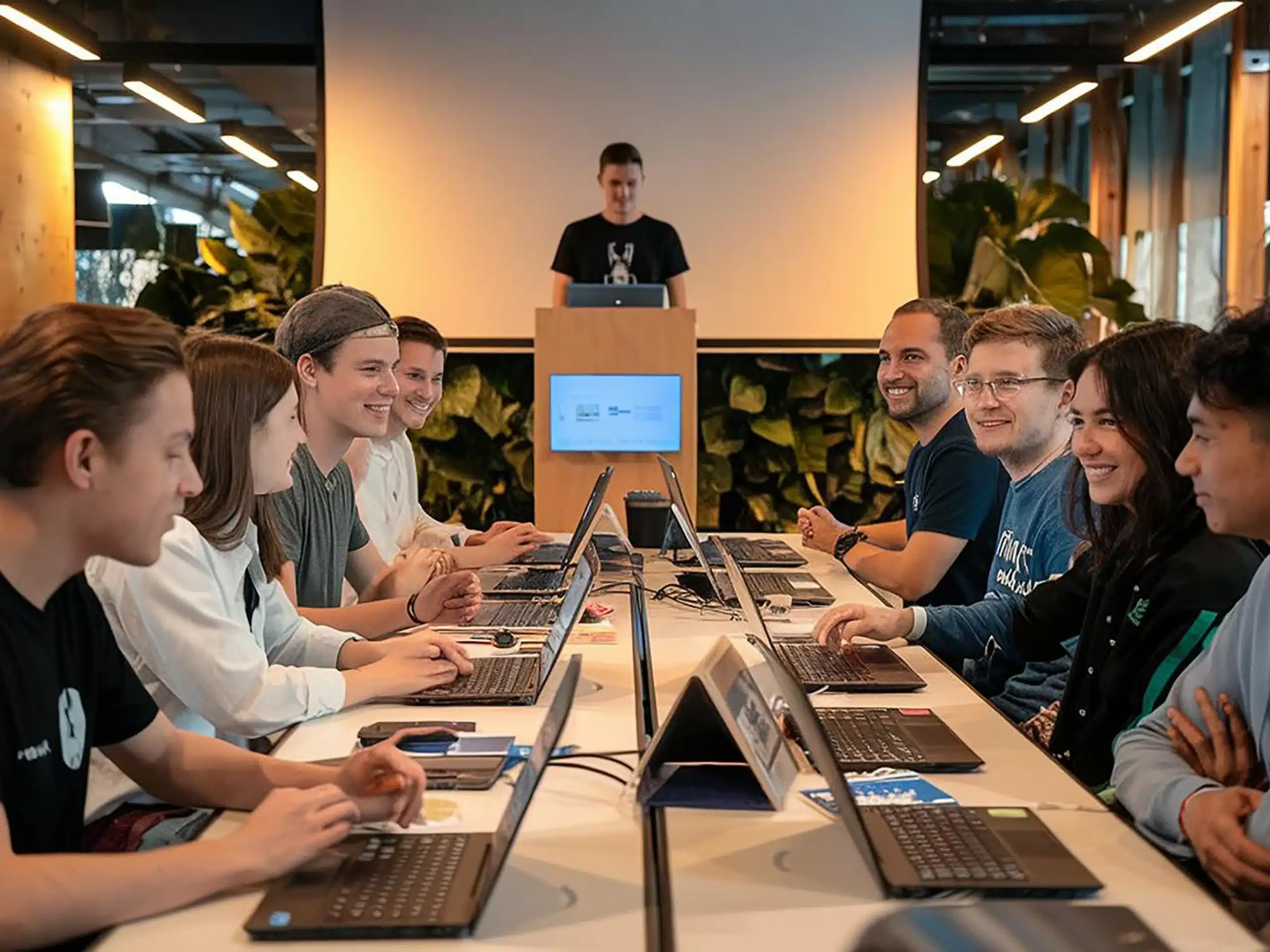For those who’ve worked at small and larger companies, there’s pros and cons of each organization. One pro of a larger organization is they typically have a wealth of subject matter experts in every field that you can learn from, discuss best practices, and continue to hone your expertise.
At smaller companies, this is often not possible, you might be the only UX designer, Mobile App developer or Product Manager. How do you stay up to date and continue to learn without subject matter experts and mentors in your field?
Additionally, for tech companies, there are plenty of smart reasons why they would want to use a small development team.
Maybe you’re early-stage and watching every dollar. Maybe you have a defined project, like a sprint, a prototype, or an MVP and don’t need a full-time bench. Or maybe you’re augmenting an internal team and just need a few specific skill sets to move faster.
All of those decisions make perfect sense. But they come with one big question: is it enough?
At York IE, we built our Guild model to answer that exact question.
What Exactly Is a Guild?
A Guild is a community of practice across our entire organization, organized by specialty. We have Guilds for Frontend, Backend, Mobile, DevOps, AI/ML, QA, UX, and Product Management. Each Guild exists to share knowledge, solve hard problems, and raise the bar for everyone in that discipline.
For example, if you have one mobile developer assigned to your project, they’re never working alone. They are plugged into our Mobile Guild, where dozens of practitioners discuss SDK updates, performance hacks, and design patterns. It’s like giving your developer access to a bench of specialists without adding to your payroll.
Why This Matters for Clients
The impact of Guilds is easy to feel but hard to replicate.
- Depth without headcount: Clients running lean still get the benefit of a large team’s collective wisdom.
- Speed to solution: A sticky bug doesn’t sit unresolved for a week. It’s escalated to the Guild, where another developer has probably solved it before.
- Standards by default: Guilds maintain living libraries of templates, runbooks, and component sets. That means faster delivery and consistent quality across teams.
- Continuity and resilience: If one team member transitions off, another Guild member can step in with less ramp-up time because the practices are shared.
This model has helped clients avoid the classic small-team bottlenecks where everything rests on one person’s shoulders.
Real Client Outcomes
Recently, our DevOps Guild standardized a hardened deployment pipeline that cut onboarding time for new projects by days. Every client, even those with just a single DevOps engineer, now benefits from that system.
Our AI Guild documented prompt engineering patterns that slashed token costs for multiple SaaS clients experimenting with LLMs. Instead of reinventing the wheel, every new project starts with proven patterns.
The Frontend Guild created a shared component library, so our designers and developers aren’t rewriting the same buttons and tables from scratch. That accelerates delivery and ensures design consistency.
Preparing for the Next Evolution: AI and the Well-Rounded Engineer
The rise of AI is fundamentally changing software development. The traditional lines between frontend, backend, and DevOps are starting to blur. Engineers who once specialized in narrow areas are now being asked to think holistically about systems, data flows, user experience, and automation all at once.
AI will automate portions of coding and testing, but it will also demand a new kind of engineer: one who understands how all the layers connect, who can apply AI responsibly, and who can collaborate across disciplines.
This is exactly where our Guilds give York IE and our clients a long-term advantage.
Because our engineers regularly rotate through multi-disciplinary Guilds, they’re already exposed to the full stack of product development from design and architecture to AI integration and deployment. That exposure makes them better problem solvers today, and better prepared for the AI-enabled workflows of tomorrow.
Just as importantly, our Guilds will serve as training hubs as technology evolves. They’ll be where we upskill developers on new tools, AI coding assistants, and the changing art of software craftsmanship.
We’re not just building products; we’re building the next generation of engineers.
How Guilds and the Hub Work Together
Guilds aren’t just casual conversations. Their best practices feed directly into our Hub, the platform that powers our advisory services.
- Standards from Guilds become automated checks in our code quality and Jira quality modules.
- Reusable patterns become project templates inside the Hub, so teams can spin up consistent workflows in minutes.
- Knowledge is captured as searchable artifacts, not just Slack threads that disappear.
The result is a flywheel: practitioners refine their craft in Guilds, those refinements become part of the Hub, and clients see the benefits in every sprint.
Why Guilds Are Different From “We Have Slack Channels”
A lot of firms will tell you they share knowledge. But in reality, it’s just ad hoc chats or tribal knowledge. Our Guilds are accountable for outcomes. They own documented standards, reusable assets, and measurable adoption. That’s a system, not a suggestion box.
For clients, that means more than nice collaboration. It means tangible improvements in speed, quality, and resilience of your product development.
If you’re hiring a small pod, you shouldn’t feel like you’re hiring in isolation. With York IE, you get the people you need today, backed by the collective brainpower of our Guilds. It’s the best of both worlds: the agility of a startup team and the strength of a scaled engineering organization.



